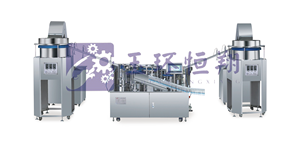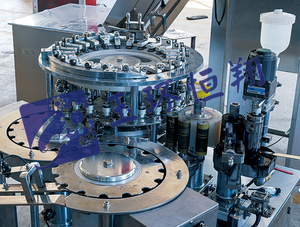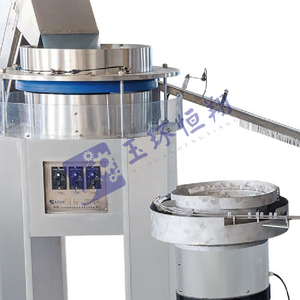
All categories
Featured selections
Trade Assurance
Buyer Central
Help Center
Get the app
Become a supplier

(1210 products available)














Some core parts of the plastic disposable syringe making machine also need supporting equipment to operate well. The list below contains some common supporting machines for syringe production lines.
Blowing Machine
A syringe is made with a hollow barrel, which requires blowing to form. The syringe barrel is one of the syringe components that the syringe-making machines blow up. In some cases, a syringe barrel may require two or more layers of material, which can be helped with the blowing machine's assistance. The blowing machine works with the primary material-forming unit of the injection molding machine at a specified distance. This allows the injection of air into the barrel of the liquid to create its structure.
Moulds for Syringe Parts
Syringe parts are molded with different types of molds according to the material and structure. Molds are made precisely and can be single cavity or multi-cavity according to the needs of mass production. Materials like aluminum alloys and stainless steel are frequently used to ensure that the molds maintain durability even if they are used in high-production molding machines. In some syringe-making machines, the molds integrated into them can be used separately.
Assembly Machine for Syringe Parts
For the assembly of the different parts of the syringe, like the barrel, plunger, and needle holder, assembly machines can help to improve the efficiency of the assembly process. The assembly is done accurately and at higher production rates with the help of assembly machines. Assembly machines are custom-made to meet the requirements of the customer, which means the assembly usually is very fast, and there is little requirement for manual work, which further increases efficiency.
Extrusion Machine
The extrusion machine helps to offer raw materials that will be used in the production of syringes that can be made with more than one material. Some more complex syringes will require different kinds of materials in different areas. This is where the extrusion machine can provide the material in a way that is consistent and precise. For example, if the barrel of the syringe needs to be made of transparent polypropylene, but the plunger needs to be made of a different material, then the extrusion machine can help provide these two parts at the same time, thus improving production efficiency.
The plastic syringe maker machine parts have to satisfy particular standards in connection with materials, structure, electrical appliances, and the control system for a machine that manufactures plastic syringes.
Materials:
The chief materials employed in producing the machine are usually high-strength alloy steel and engineering plastic. These allow the machine to last over the long term, with low maintenance needs brought about by frequent repairs. They allow it to function faultlessly and smoothly, ensuring that the process of manufacturing plastic syringes is efficient.
Structure:
The structure features include a molding area, an injection system, a control area, and a cooling area. The arrangement of these zones is practical, making it easy for users to control different parts of the machine. Each section has its functions, allowing for well-coordinated manufacturing procedures. Consequently, users can manage the injection pressure, temperature, cooling time, and other critical factors in producing plastic syringes precisely. This kind of precise control helps enhance product quality and output rates.
Electricals:
The electrical components of the machine include sensors, servo motors, and other such components that are reliable and durable. Good-quality electrical components help reduce failure rates and maintenance needs. When manufacturing plastic syringes continuously and in bulk, machines must function for long periods. So, they must have components that don't need looking after or stopping to fix.
Control System:
Plastic syringe-making machines usually have a digital control system. Through this system, operators can set and monitor the parameters required precisely. What this means is that the precise quantity, temperature, pressure, and time needed for the manufacture of plastic syrigines can be looked after so that quality is maintained and improved. Maintenance needs are reduced, and product quality is enhanced when the mechanical function of making products can be controlled and is automated.
The efficient and proper functioning of machines that make plastic syringes, as well as their service over the long term, depend on regular maintenance of the equipment. This is carried out according to the specifications given by the manufacturer. Below, we list some essential points on maintenance that should be done on a frequent basis.
Routine Checkups:
Users need to develop a maintenance program. This program should include the time and type of inspection and maintenance to be done on the machine. It will become a set task list. The set task list can be referred to for regular maintenance goals. This is ideal for ensuring that machines work well, and users will find it helps them use equipment better.
Lubrication:
Regular application of lubricant to moving parts of the equipment should be done, as per guidance from the manufacturer. It will reduce wear and tear on moving bits like bearings, chains, and more. They will experience less wear and tear if lubricant is applied. Lubricated components will have less friction. Therefore, they're more likely to work 'like new' for a long time, which improves efficiency and depends on the smoothness and precision of the machine's parts.
Calibrations:
Regular adjustments to the injection volume, pressure, airflow, and temperature need to be done. By doing this, users can ensure that the quality of syringes produced is consistent and that the equipment is reliably functioning. What is more, making these adjustments regularly works to increase yield and decrease waste in manufacturing processes.
Cleaning:
Plastic syringe machines should get cleaned often. Residue left over from production, dust, or other forms of dirt must be removed. All that remains of the cleaning products should be done in line with the guidelines of manufacturers. Doing this will help keep the equipment working effectively and with a standard of high quality. It can reduce the danger of contamination in the production line, which can improve hygiene standards.
Since their invention in the 1950s, plastic disposable syringes have become indispensable instruments across various sectors and applications, all of which rely on syringe manufacturing machines.
Healthcare Sector:
The healthcare sector, encompassing hospitals, clinics, pharmacies, dental practices, veterinary offices and healthcare product manufacturers, constitutes the primary application area for plastic disposable syringe manufacturing machines. In this sector, disposable plastic syringes are used for various purposes, including drug delivery, vaccinations, blood sampling, COVID test kits and other medical testing, intravenous therapy and liquid extraction or injection procedures.
Pharmaceutical Industry:
Plastic disposable syringes play a crucial role in the pharmaceutical industry, where they are widely used for drug packaging and sterile manufacturing. Plastic disposable syringe manufacturing machines are responsible for producing the precise and high-quality syringes essential for medication delivery, particularly in cases requiring high levels of safety and sterility.
Cosmetic and Beauty Industry:
Plastic disposable syringes are widely used in the cosmetic and beauty industry for product application, specifically when it comes to injecting fillers. Additionally, they serve the purpose of accurately measuring and dispensing various cosmetic products. Cosmetic products that require precise measurement and contamination-free application, such as essential oils, perfumes and serums, benefit from the use of plastic disposable syringes.
Food and Beverage Industry:
Syringes in the food and beverage industry are typically employed for the precise injection of flavors into foods, such as marinated meats, sausages and baked goods. They are also used for accurate portion control when it comes to sauces, dressings and liquid ingredients. Additionally, syringes play a role in the measurement and dispensing of beverages, including cocktails and flavored syrups.
Agriculture and Veterinary Medicine:
In the field of agriculture, plastic disposable syringes find utility in the precise application of pesticides, fertilizers and agricultural chemicals. Syringes are also employed for the administration of medication, vaccines and health supplements to livestock and pets in veterinary medicine.
Production capacity:
The's indicative capability of generating syringes per unit time is known as the manufacturing rate of a syringe-making device. It's critical to match the production capacity of the machine to the expected demand for the manufactured syringes., ensure sufficient supply to meet market needs while avoiding over investment and idle resources.
Quality control system:
A quality control system ensures that the produced syringes meet the required standards. This system typically includes inspection and testing equipment, as well as established quality control procedures.
Flexibility:
Plastic syringe making machines should ideally be able to adjust production parameters to produce different types and specifications of syringes to meet diverse market demands. Adjusting production speed, material feeding methods, etc..
Automation:
Consider the level of automation in the machine, such as whether it is equipped with automated feeding, cooling, cutting, and packaging functions, etc. Automated processes can help improve production efficiency and reduce labor intensity.
Sustainability:
Disposable plastic syringes are a significant source of plastic waste. Seeking sustainable alternatives to conventional plastic, such as biodegradable materials or recyclable plastics, can significantly reduce environmental impact and improve social sustainability.
Compatibility with different types of plastics:
Machines that accommodate various plastics expand the materials available to producers, thereby enhancing adaptability to diverse market requirements and consumer preferences.
Q1. What kind of plastic is used to make disposable syringes?
A1. Generally, plastic materials such as polypropylene, polystyrene, and polyethylene are commonly used in making disposable syringes. Good sticking properties are required to make a plunger that can create an airtight seal within the barrel.
Q2. What is the structure of a plastic syringe?
A2. A plastic syringe comprises five parts: the barrel, plunger, stopper, tip, and flange. Each part has its own function. The flange is designed to hold the syringe, while the stopper controls the fluid flow through the nozzle. In the case of a disposable syringe, all parts are assembled in a way that makes them unable to be replaced or taken apart.
Q3. Can automatic syringe-making machines produce other types of syringes?
A3. Some machines are capable of producing various types of disposable syringes. They may manufacture fine-point industrial syringes or small-volume feeding syringes for healthcare applications, such as inspecting food, cleaning, injecting small amounts of machinery lubricant, or medical purposes.